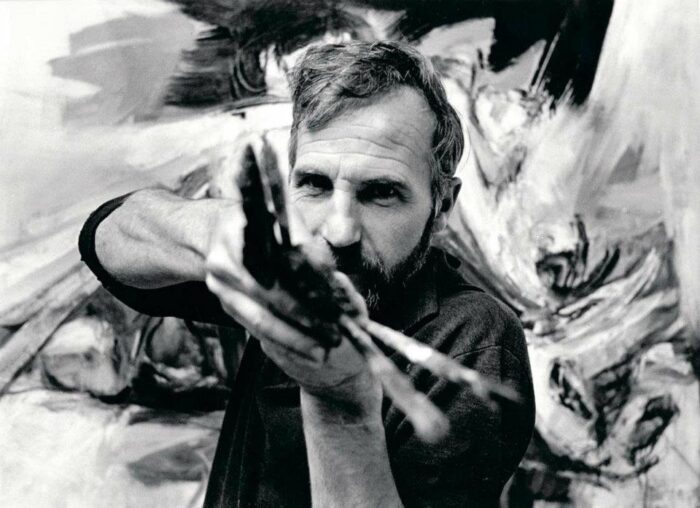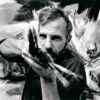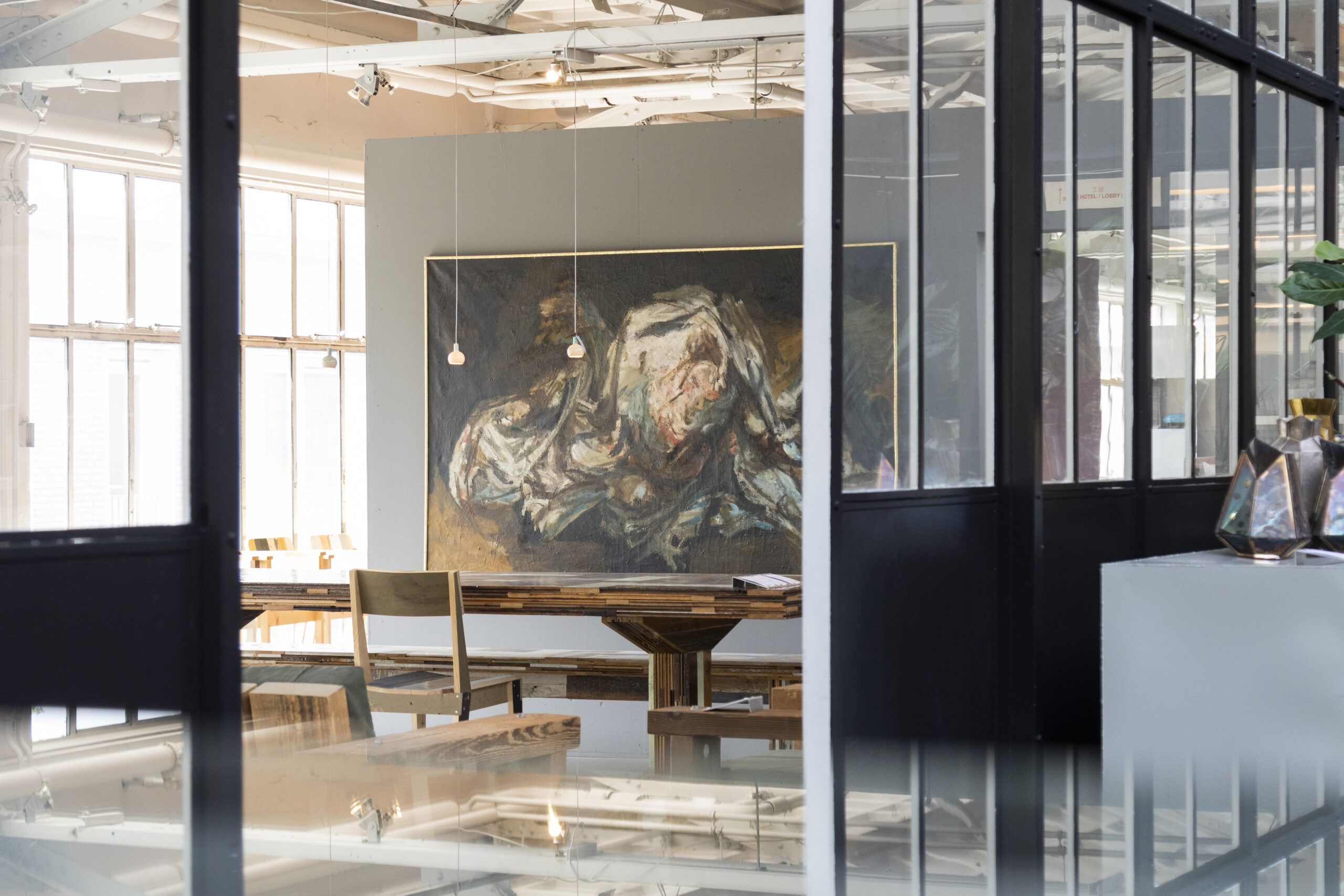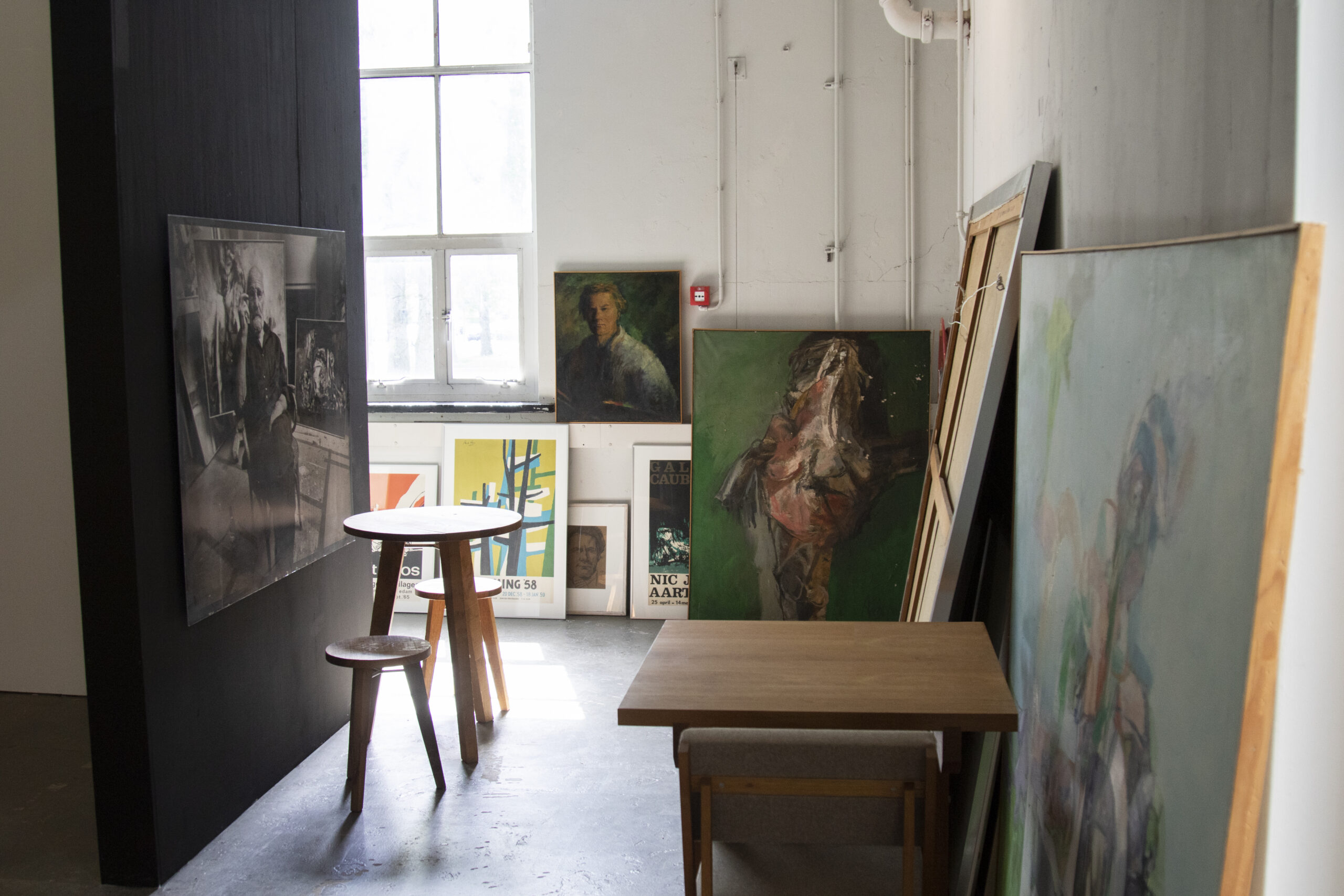Description
Aart Roos became known mainly in the 1950s and 1960s with expressionist and monumental paintings, but also produces gouaches, drawings, graphics, sgraffitos, glass appliques and murals. His style belongs to abstract expressionism. He was born in Zaandam and studied from 1941 to 1944 at the Rijksakademie van Beeldende Kunsten in Amsterdam. There he mainly learns portrait and model drawing from Prof. G.V.A. Röling. His classmates includes Jef Diederen, Pieter Defesche, Karel Appel, Corneille and Ko Sarneel. After the war, Roos learned all kinds of painting techniques and became active in the recently established Professional Association of Visual Artists named ‘BBK’ (Beroepsvereniging van Beeldende Kunstenaars).
In his youth, Aart Roos was inspired by Picasso, Paul Klee and Constant Permeke, later in his life by Willem de Kooning, Robert Motherwell and Graham Sutherland. Immediately after the war, his style changed from figurative to abstract expressionist. He paints colorfully and often uses the drama of interpersonal relationships as a theme. But drama in nature is also often reflected in his work.
Commissioned by municipalities and companies, Aart Roos produces countless monumental works of art in and around Amsterdam, of which the fifteen-meter-long mural ‘Vogels en Bloemen’ (Birds and Flowers) in the former Timor School in Amsterdam from 1962 is best known.
In 2006, this piece of art was in the news because the wall threatened to collapse under the demolition hammer. Thanks to a lot of publicity in newspapers and on television and a petition signed by about a hundred prominent Dutch artists and writers, the wall was preserved. Signatories included Jan Wolkers, Remco Campert, Jeroen Henneman, Marlene Dumas, Jan Cremer and Cees Nooteboom. Later the wall was even restored.
The Stedelijk Museum Amsterdam is purchasing 19 of his works, as well as other museums and institutions. Twenty works by his hand are also included in the National Collection, managed by the Cultural Heritage Agency of the Netherlands (RCE). Roos continues to paint until 1995, when a cerebral haemorrhage forces him to stop.
A biography about Aart Roos was published in 2010, written by art historian Henk Heijnen.
This post is also available in: NL



